After a wonderful few days in Bruges, we arrived in Brussels just in time for dinner. This was our first time in Brussels, but we were particularly excited to try the food! We decided to go to a really popular food fall called Wolf. It has 17 different restaurants and even an on-site microbrewery! I wouldn’t expect any less from Belgium. We were craving a bit of change from Belgian/French cuisine, so we opted for My Tannour. In case you’re not familiar with a tannour, it’s the name for a clay oven in which, among other things, small round buns are baked on a wood fire at a very high temperature. It’s a very common way of cooking in the Levant. I had some delicious bread and falafel! We of course had the beer from the microbrewery and it was excellent.
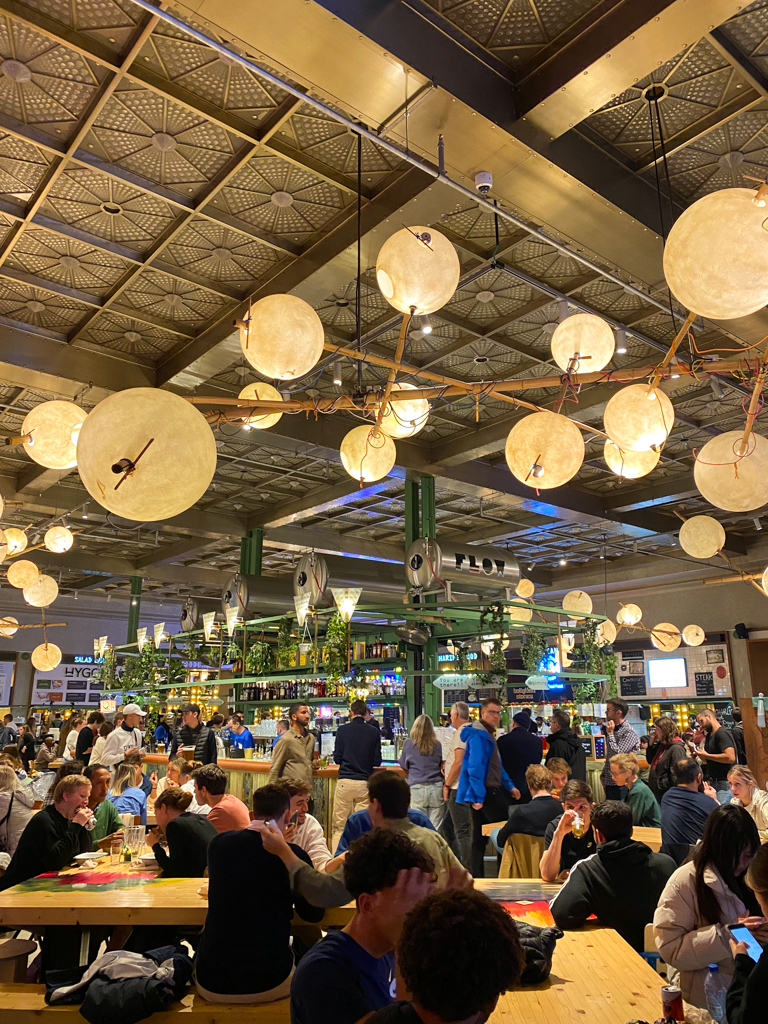
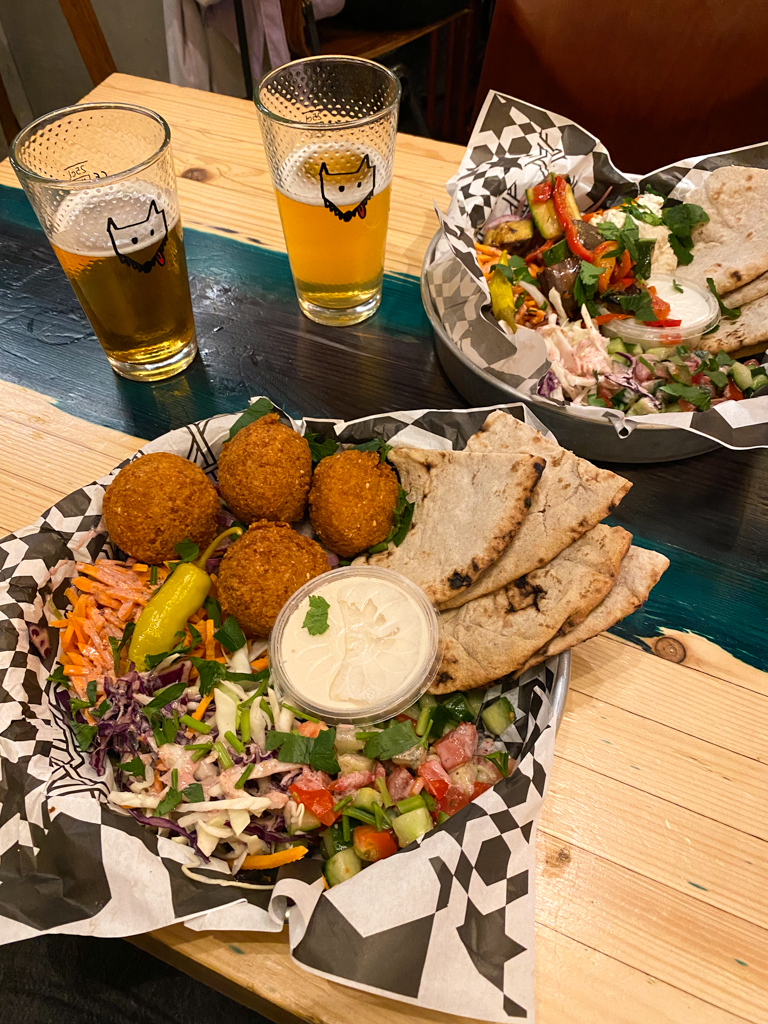
After we visited the food hall, we walked around and ventured into a traditional beer hall (how fun!) called À la Bécasse. What we didn’t know about when we committed to sitting was that it’s a Lambic bar. Lambic is a type of beer that has been brewed in Brussels, and the Pajottenland region of Belgium (southwest of Brussels), since the 13th century. It differs from most other beers in that it is fermented through exposure to wild yeasts and bacteria native to the Zenne Valley, as opposed to exposure to carefully cultivated strains of brewer’s yeast. This process gives the beer its distinctive flavour: dry and cidery! We decided to do a tasting as we’re very much unfamiliar with this beer type. Victor was not a fan of the tart taste, but I enjoyed exploring the various flavours. The beer hall itself was lovely, full of old-world charm and enthusiastic beer drinkers! I particularly loved the wood panelling and light fixtures.
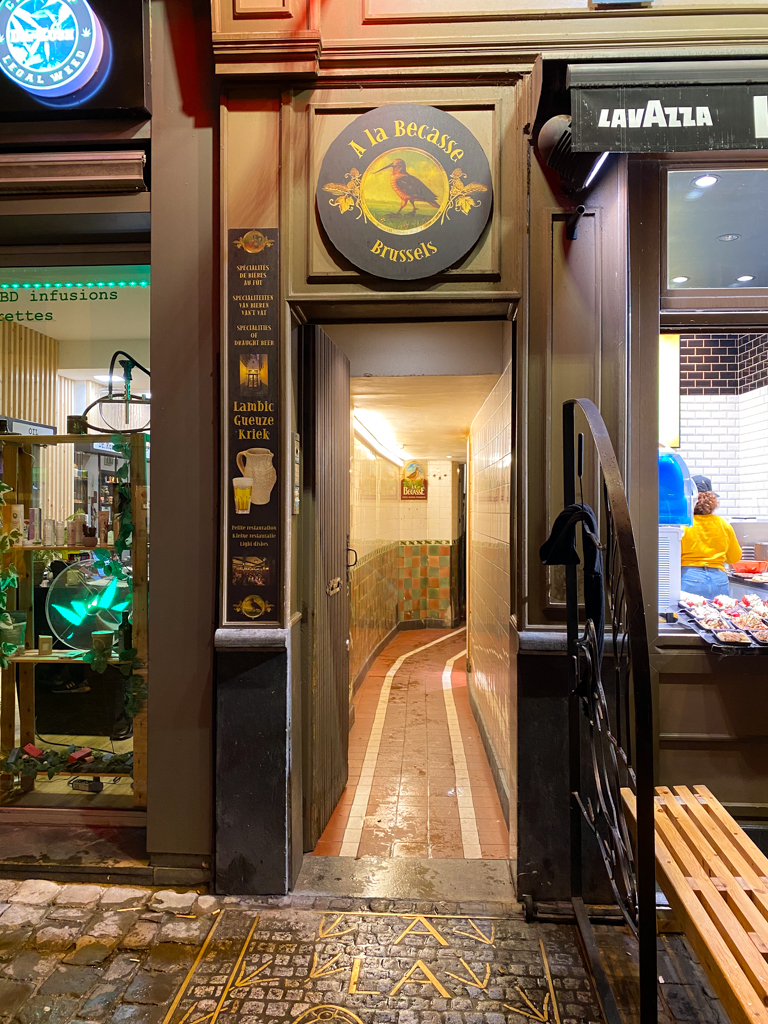

The next day we had our full day of exploring the city of Brussels. Needless to say, the city has a lot of history. It started as a small settlement on the marshes, before growing to become one of the area’s major towns during the 12th to 14th centuries. Its main economic activity was the manufacture of luxury fabrics, which were exported to fairs in Paris, Venice, the Champagne region of France, and elsewhere. The cloth trade made fortunes for a few enterprising merchant families, who developed into seven dynasties that ultimately had complete political control over the area. Unfortunately, such control led to an abuse of power, which eventually provoked a number of violent popular uprisings. In 1430, the domain (called a duchy) was merged with the possessions of the Duke of Burgundy, a notable change of the tide in history.
The Burgundian period lasted until 1477 and was full of political and artistic prestige. Brussels became the administrative seat for the area, which resulted in the city turning into a centre of art and culture. The city produced several works of art including paintings, wooden sculptures, large tapestries, and jewellery and other craftsman products for export. Brussels also began to give itself a makeover. One stark example is the Town Hall, which was built between 1402 and 1454. It rises near the marketplace with a tall steeple and a state of the archangel Michael, the city’s patron saint. It’s considered a masterpiece of Brabantine Gothic architecture.
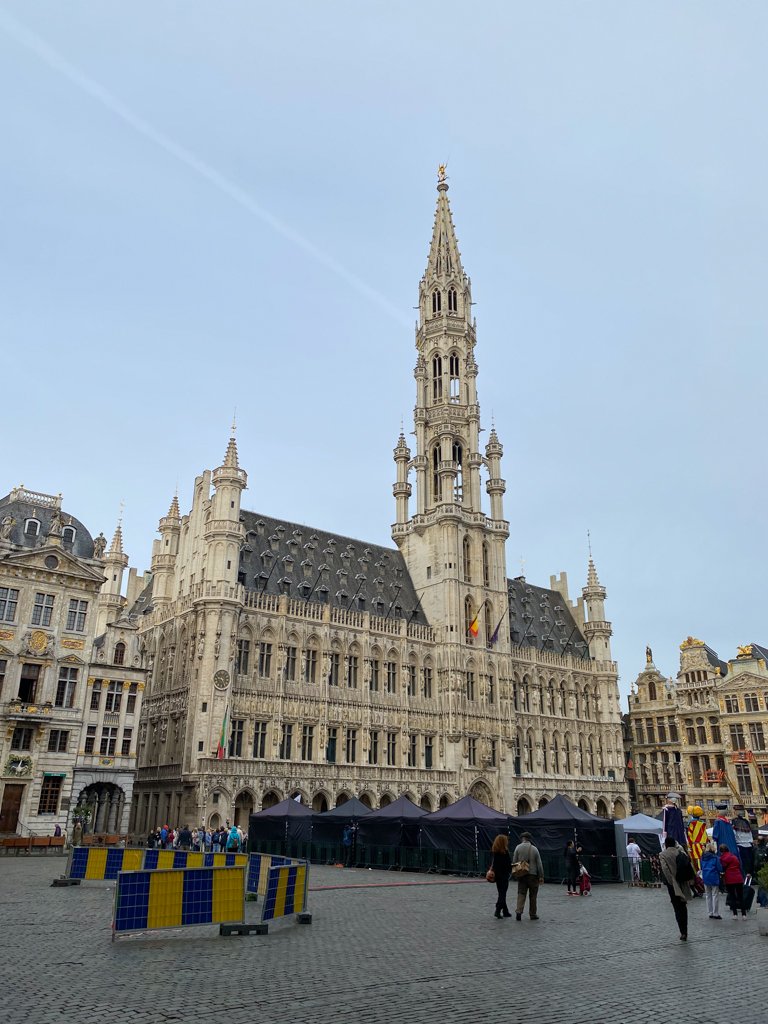
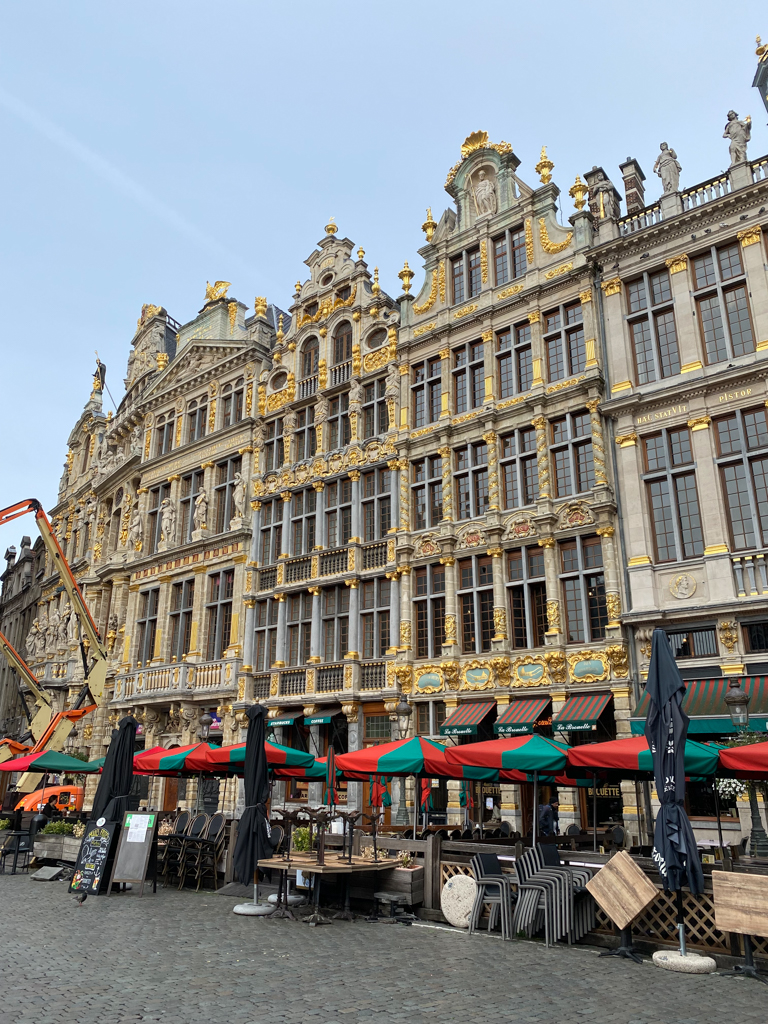
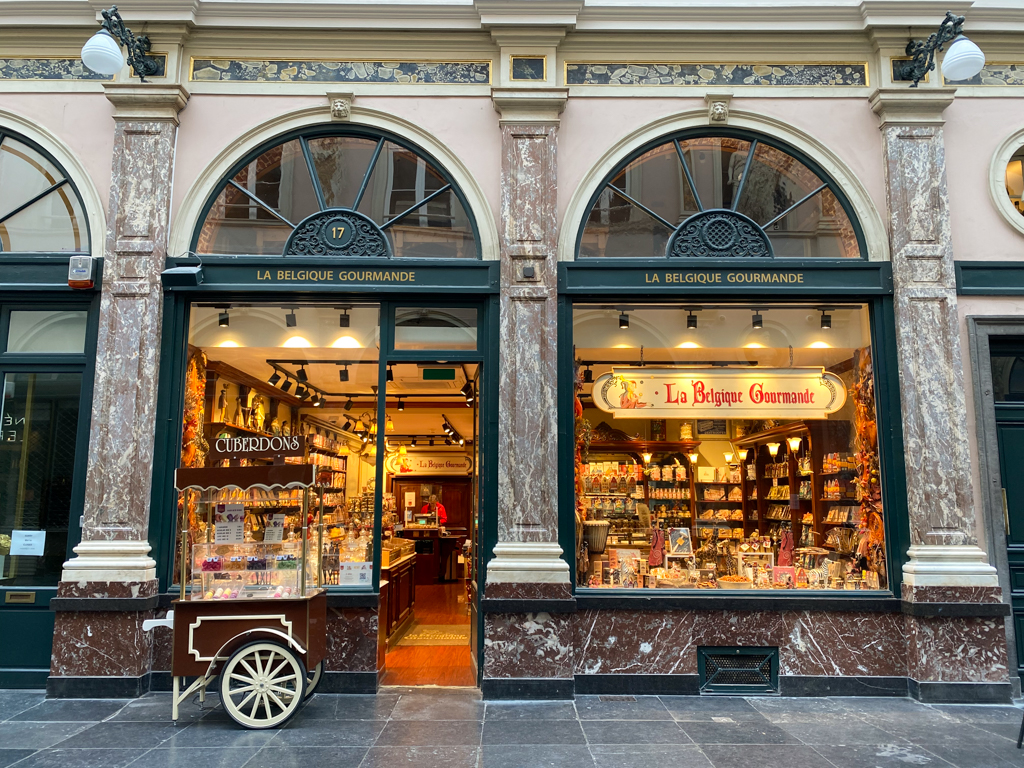
After passing through the marketplace square we went to a French bakery called Charli for breakfast. We went for a croissant (of course) and a Croix de Savoie, which is a brioche pastry filled with crème pâtissière and sprinkled with fine sugar. It’s from Haute-Savoie, a region in the Alps of eastern France. Both pastries were very yummy.
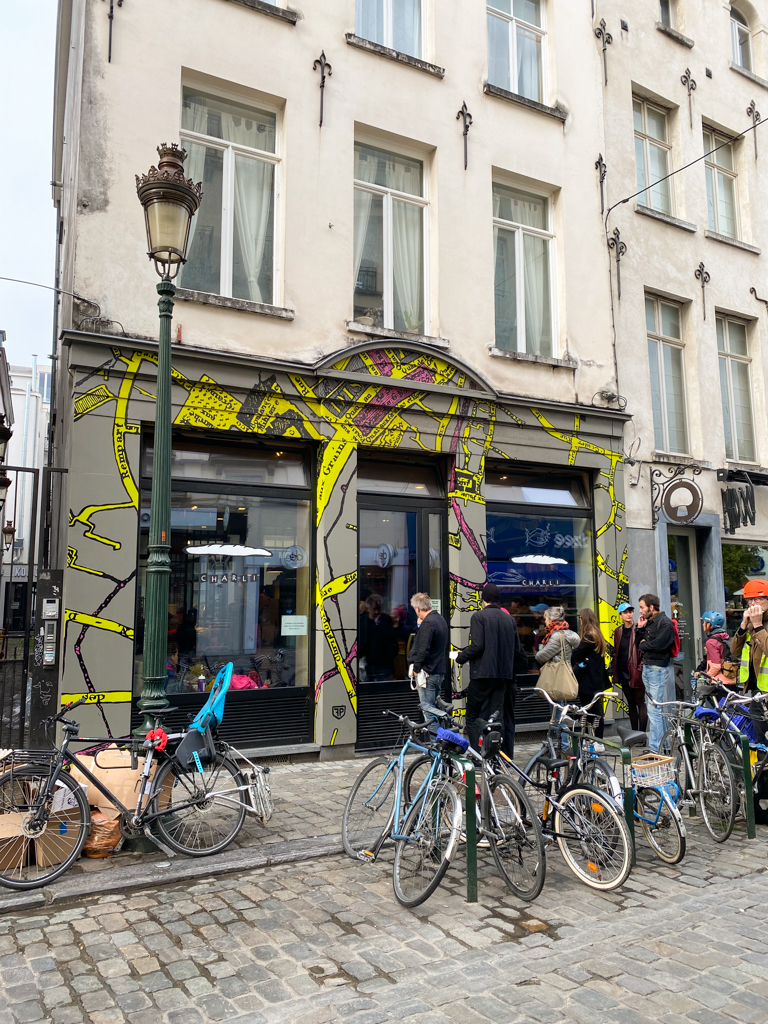
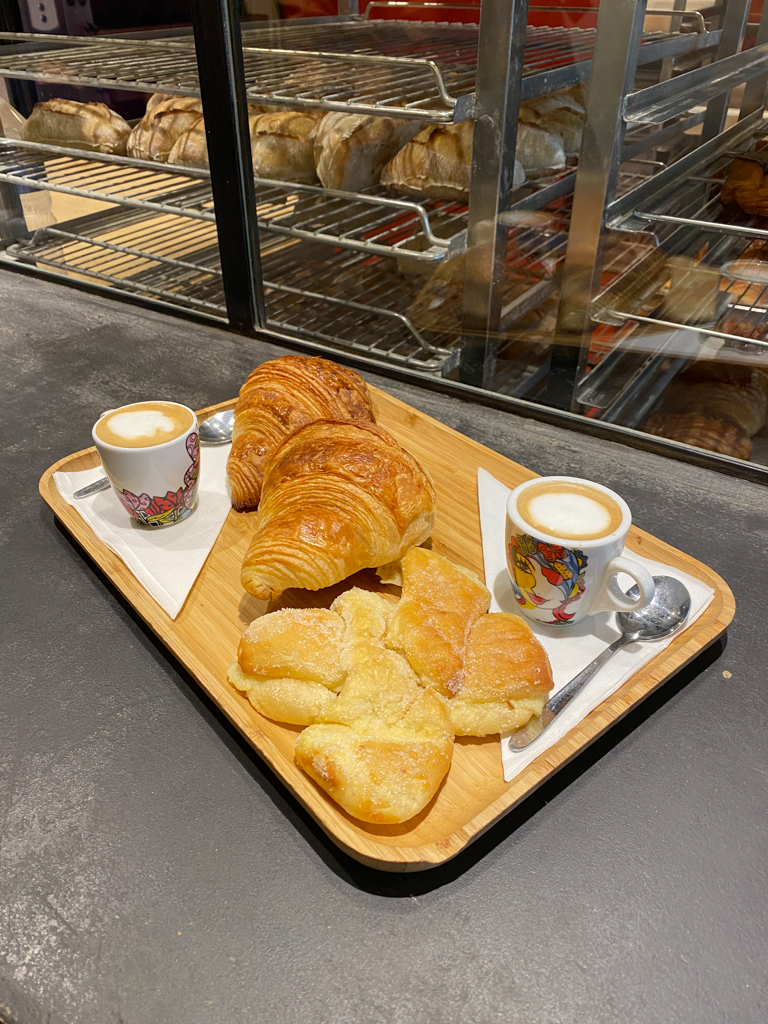
The main comic tradition in Europe is Franco-Belgian comics, meaning comics originally published in French, with Brussels being the undisputed capital of comic strips (“Bandes dessinées“). While comics have been around for a long time, Belgians still love reading and supporting comics because pretty much every child has grown up with comic strip characters like Tintin, the Smurfs, and Spirou. I was delighted to find out that Brussels has over 80 murals depicting comic strip characters and scenes. These murals have been steadily added since 1991.
We started our own self-guided comic strip mural walk around the city. We first came across Frank Pé’s Broussaille, the very first comic strip mural painted back in July 1991. We also saw many more murals including Le Passage (Schuiten) by François Schuiten & Benoît Peeters; Out in the street by Ralf König; Victor Sackville by the artist Francis Carin and writers François Rivière and Gabrielle Borile; Ric Hochet by artist Tibet and writer A.P. Duchâteau (my personal favourite mural of the day); Kinky & Cosy by Nix; Monsieur Jean by Philippe Dupuy & Charles Berberian; Froud et Stouf by Frédéric Jannin et Stefan Liberski; and Thorgal by Jean Van Hamme & Grzegorz Rosinski.
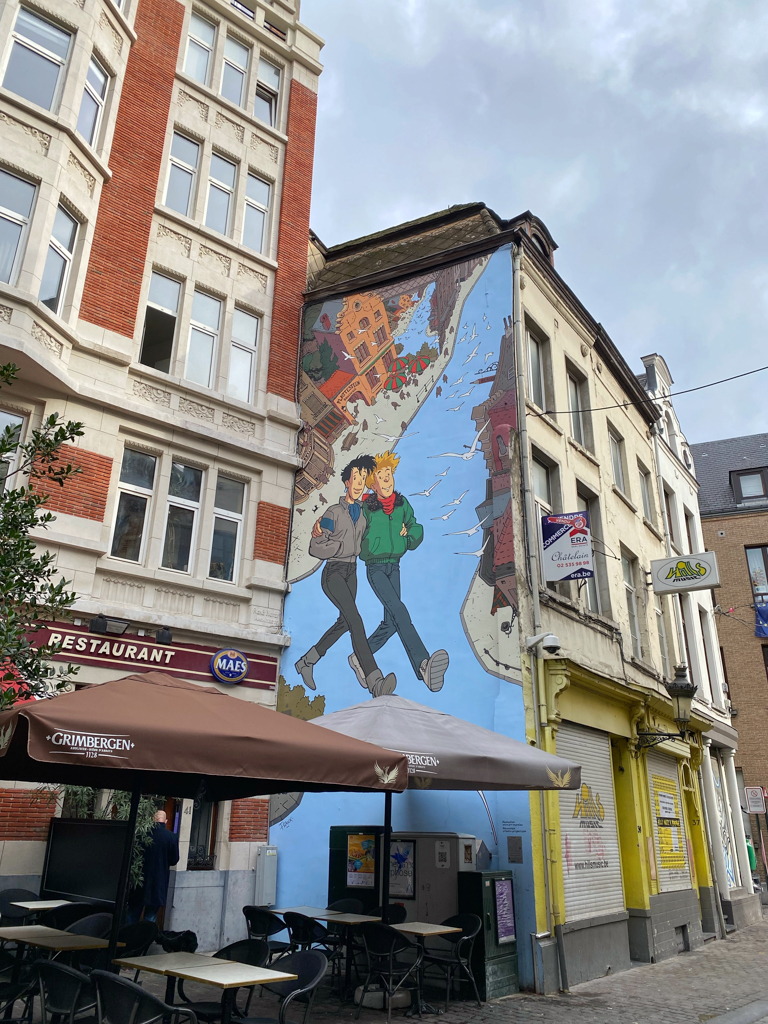
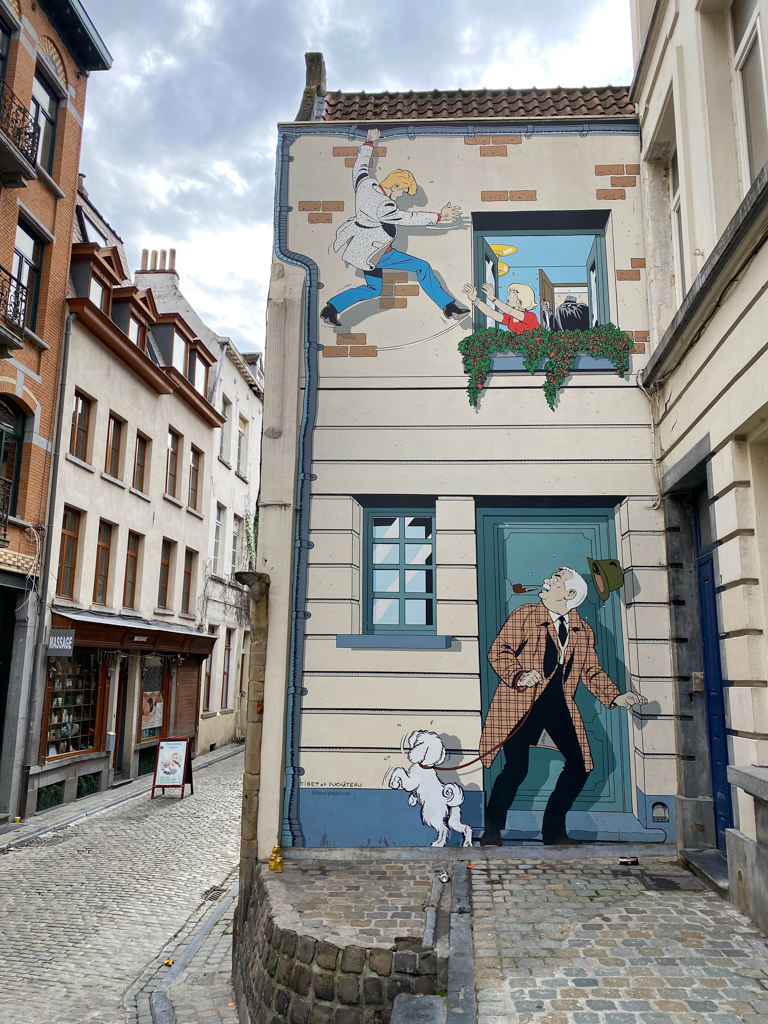
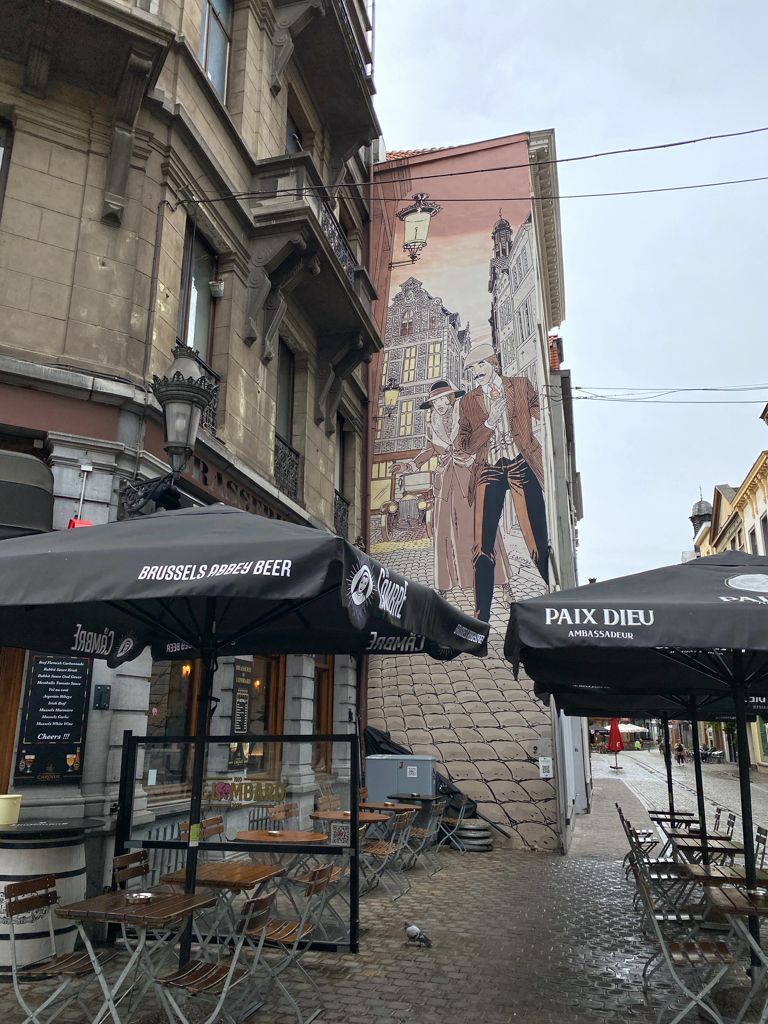

After our walk, we ventured to the vibrant neighbourhood of Saint-Gilles, a so-called alternative, hip sort of area. It’s known for its art galleries, as well as cool and trendy bistros and bars. One of the most striking buildings in the area is the town hall. This French Renaissance Revival building in Brussels is topped by a 41-metre high belfry.

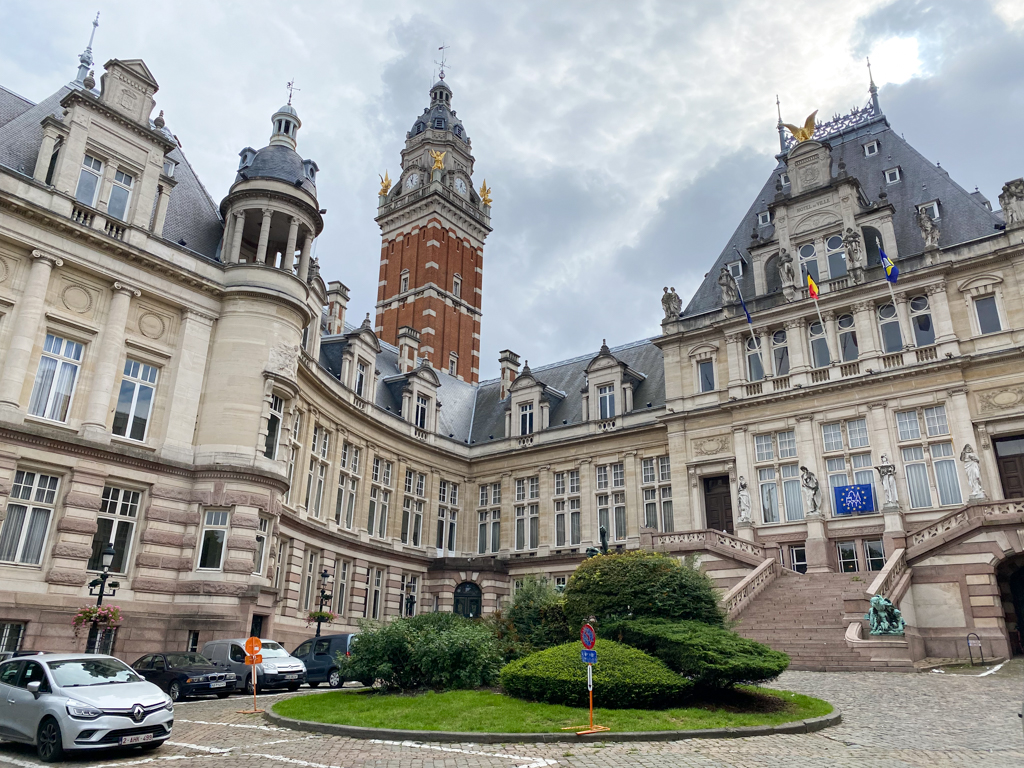
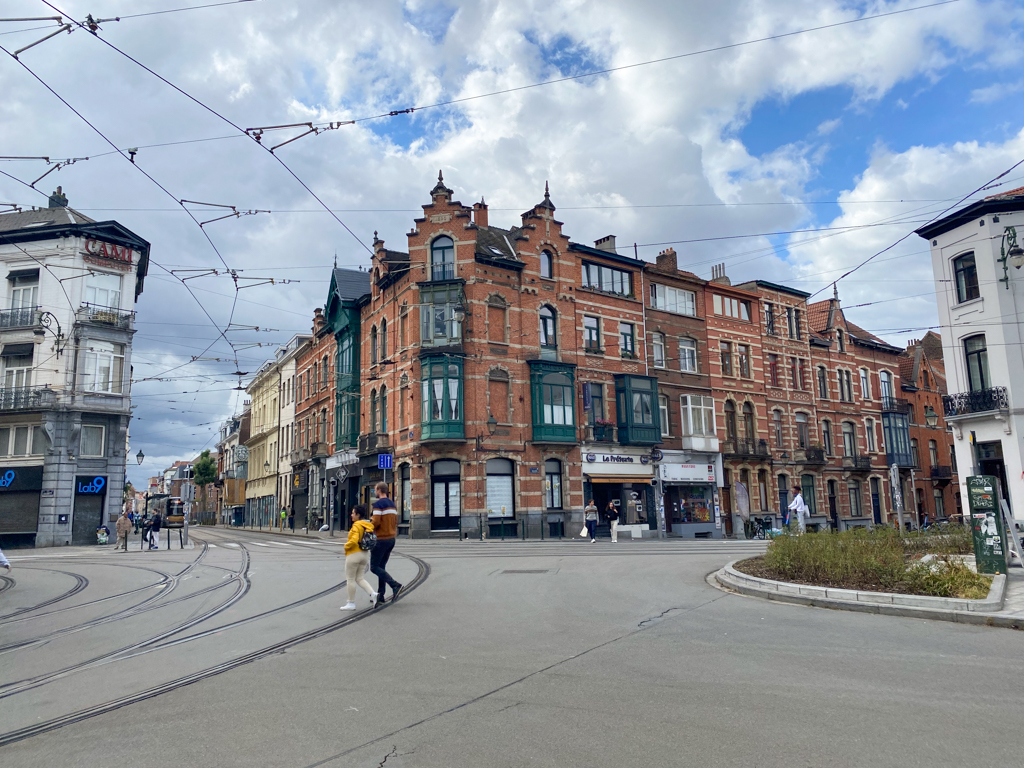
The neighbourhood is dotted with Art Deco and Art Nouveau buildings. The Art Nouveau movement of architecture and design first appeared in Brussels in the early 1890s and quickly spread to France and the rest of Europe. Saint-Gilles was developed during the peak of Art Nouveau, hence why it has many buildings in this style. One of the founders of the Art Nouveau movement was Victor Horta, a Belgian architect and designer. His house and studio are located in the neighbourhood, which has now been turned into a museum. We walked by the museum to reserve our tickets for later in the day — more on this amazing place later!
We then went for lunch at Fernand-obb. It’s a wonderful deli-style restaurant that serves the best grey shrimp croquettes in Brussels (literally, they’ve won the best shrimp croquette award two years in a row)! You can also get a cheese croquette, made with Flandrien, a semi-cured variety of Gouda made in the Kortrijk area of Belgium. All of their ingredients are sourced from Belgium, so you can guarantee the food will taste fresh and wholesome.
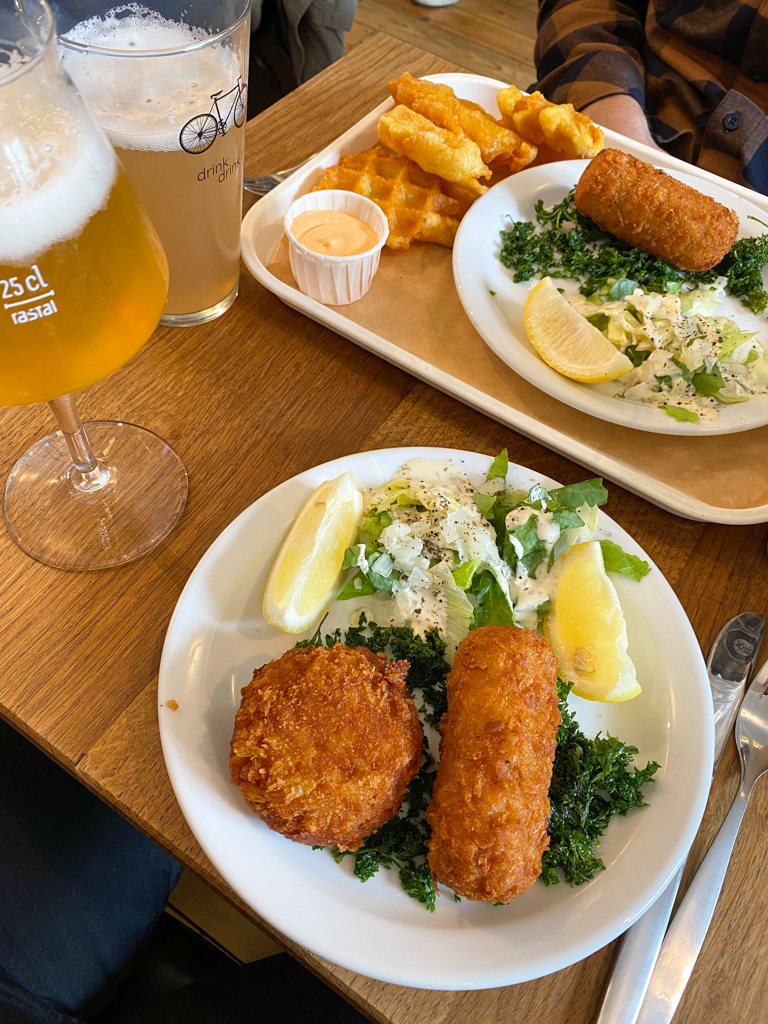
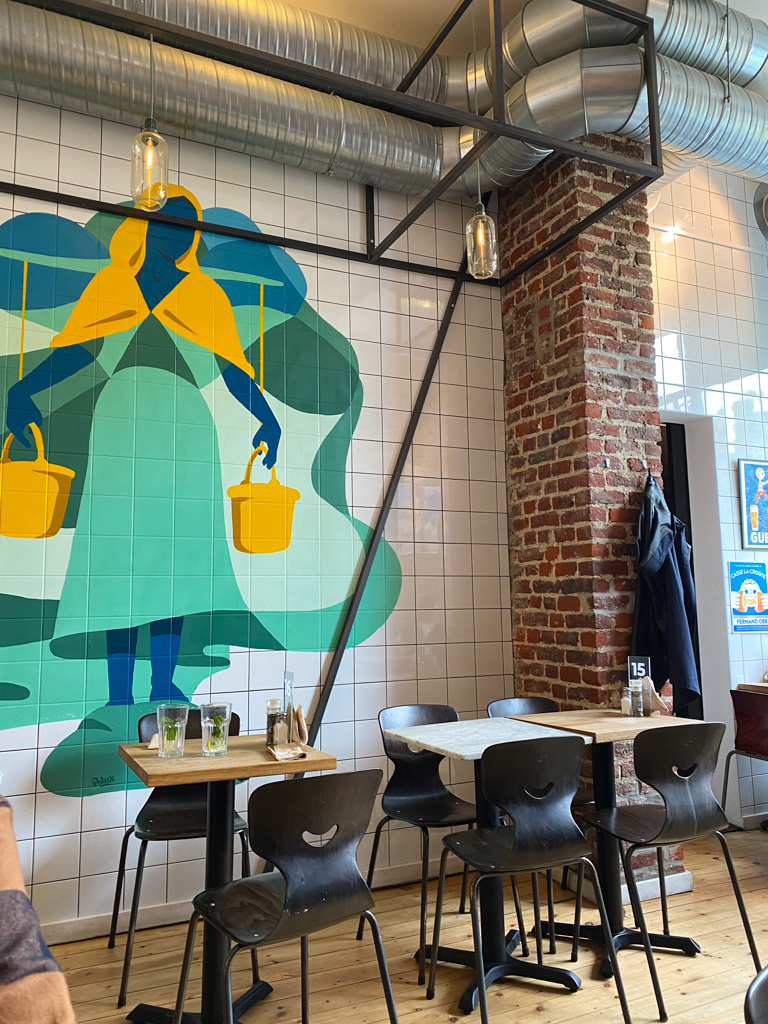
After lunch, it was time for our slot at the Horta Museum. As I mentioned, the museum is made up of Victor Horta’s old house and studio. Both buildings were built from 1898 to 1901 and are typical of the height of Art Nouveau. The interior of the house has been largely preserved so there are tons of beautiful mosaics, stained-glass windows, and furniture to admire. Photographs are not allowed inside, but nonetheless it’ll be difficult to remember such a beautiful museum.

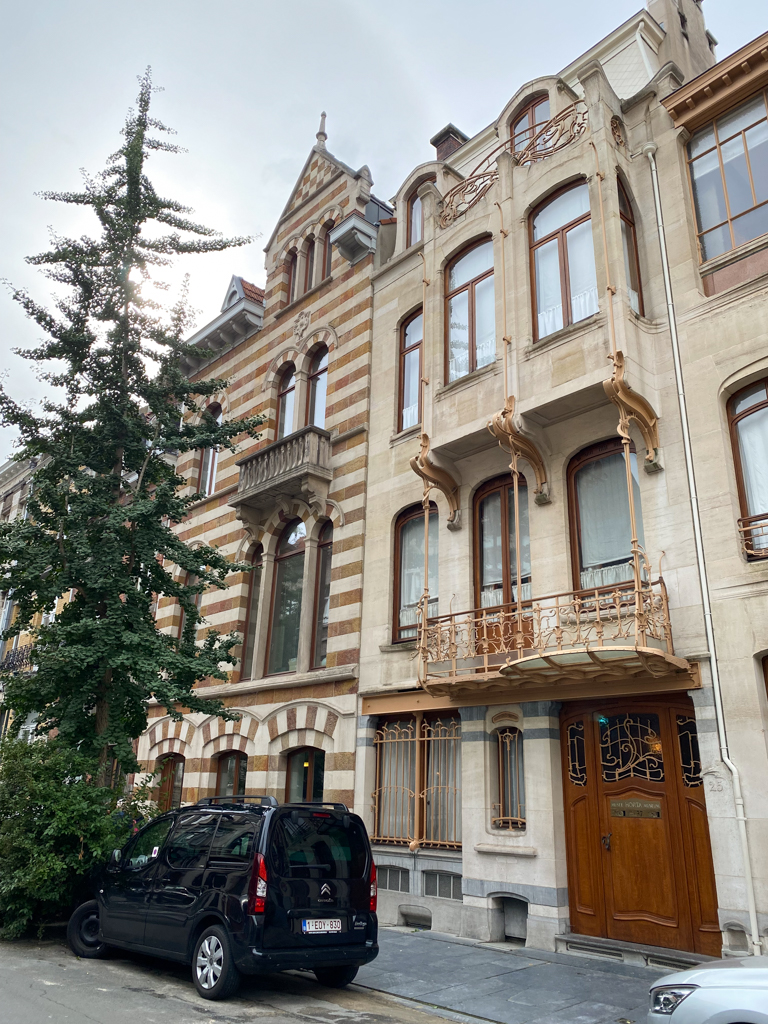
After the museum, we continued our comic strip mural walk as of course we still had so many more to see! We saw XIII by artist William Vance and writer Jean Van Hamme, Young Albert by Yves Chaland, Olivier Rameau by artist Dany and writer Greg, and then the grand finale, Tintin by Hergé.
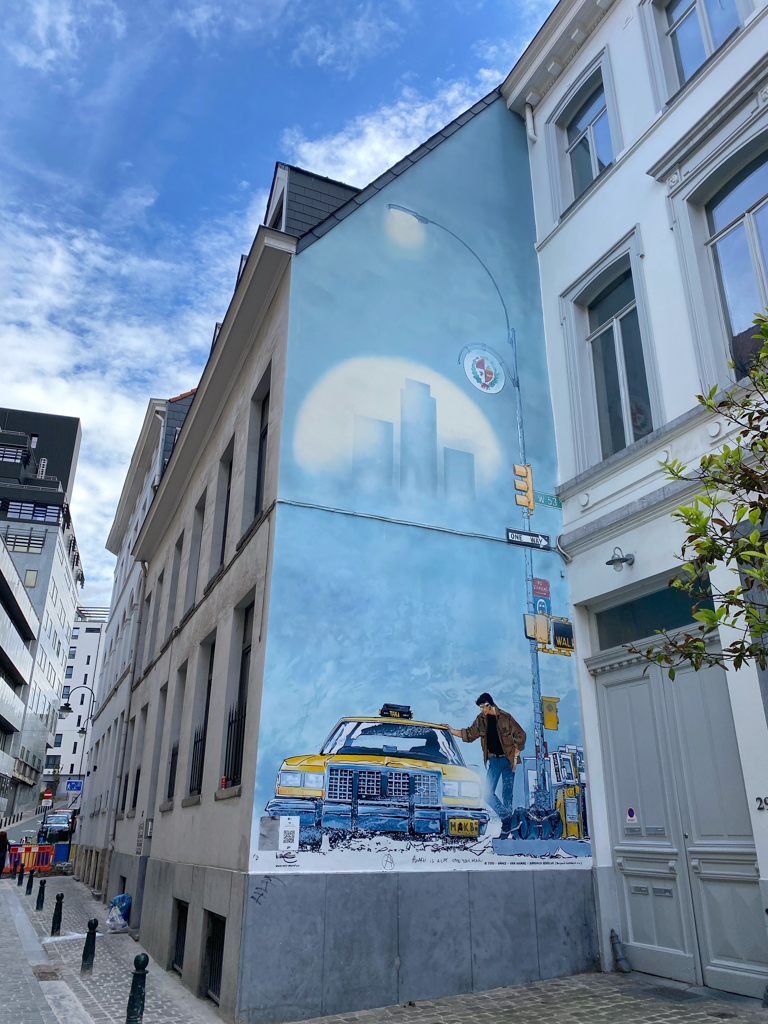
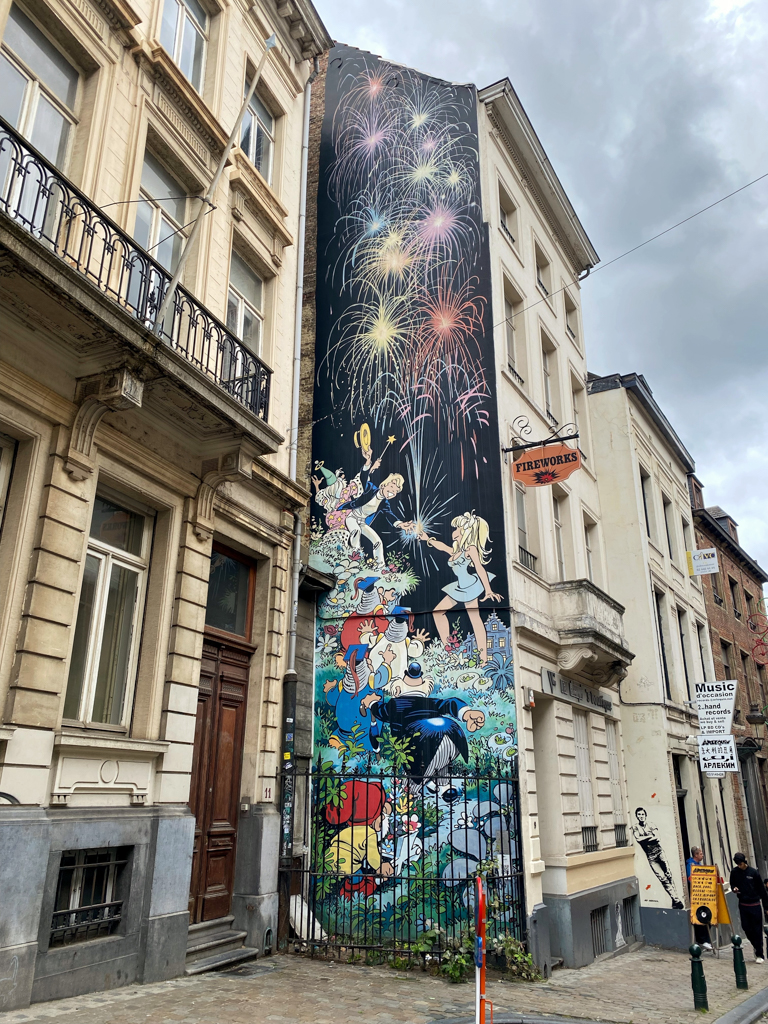

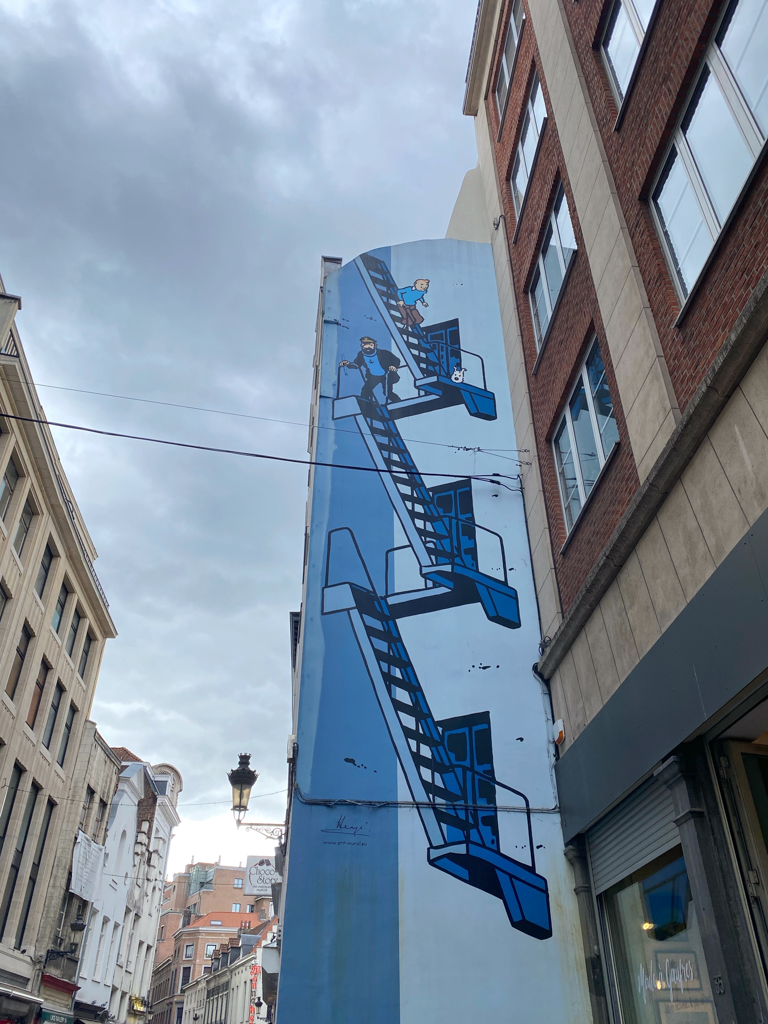
But, we actually had one final grand finale: the famous Manneken Pis! It’s probably the best-known symbol in Belgium, but in case you’re not aware, the Manneken Pis is a bronze fountain sculpture featuring a naked little boy, urinating into a fountain’s basin. It’s not easy to summarise why this sculpture is so famous, but it’s essentially because of a combination of folklore, and the ability of Belgians to make fun of themselves (and rebel!). The figure is also regularly dressed up and its wardrobe consists of around one thousand different costumes, which is quite fun to see.
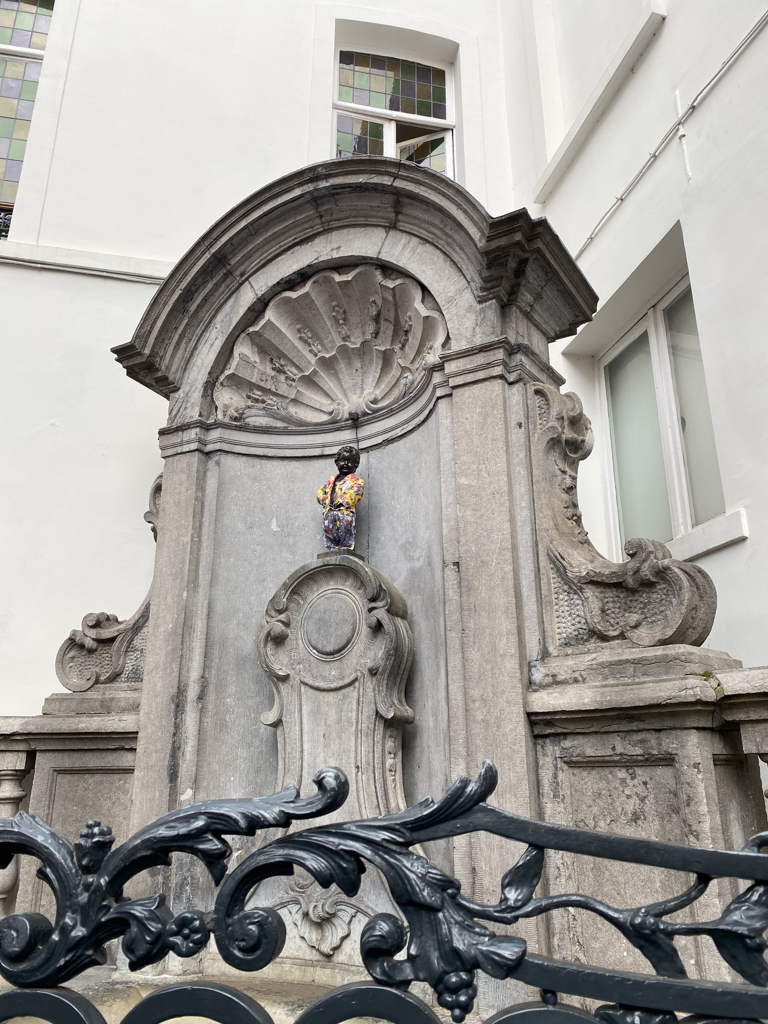
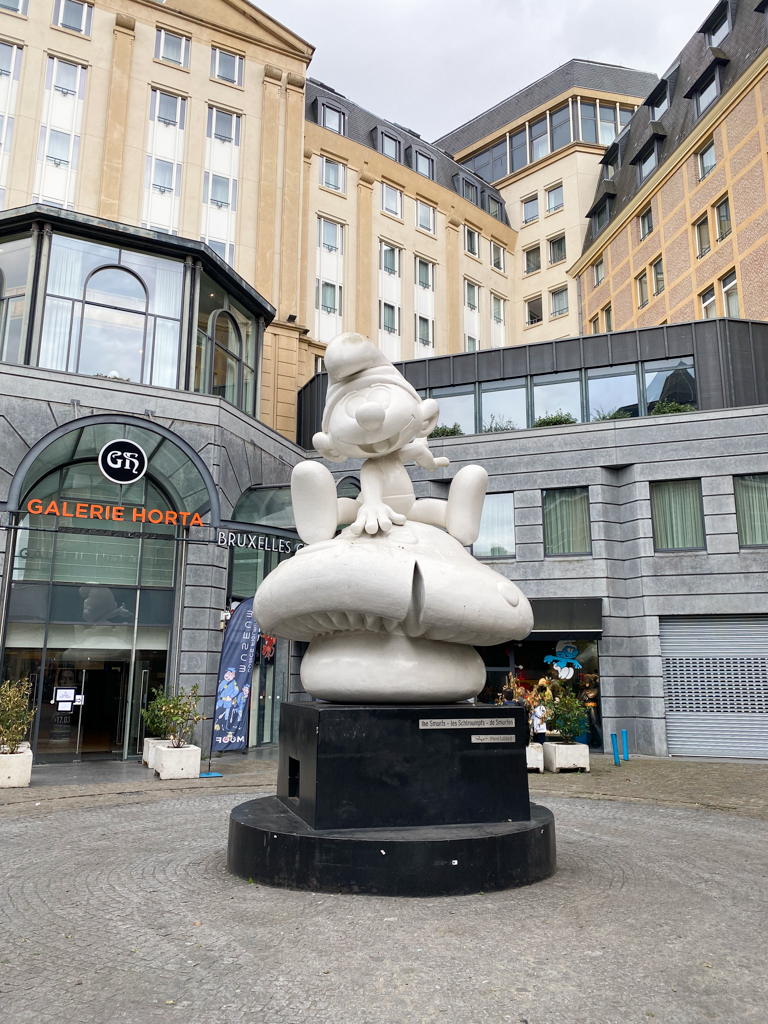
We saw one last statue on our way to the train station, one of a smurf, and then that really ended our visit to Brussels and Belgium. I had a wonderful time exploring this European metropolis for the first time. It felt like a city for everyone, likely reflected by the fact that so many different Europeans do pass through here!
Have you been to Brussels? What did you think?

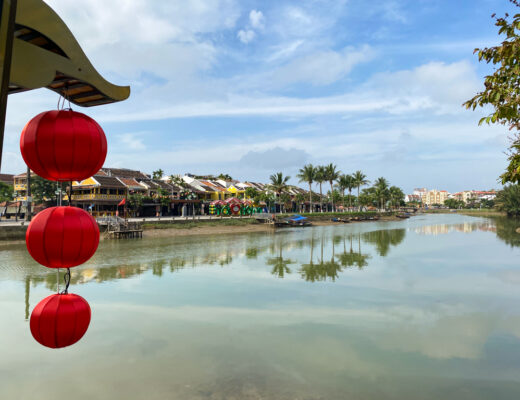
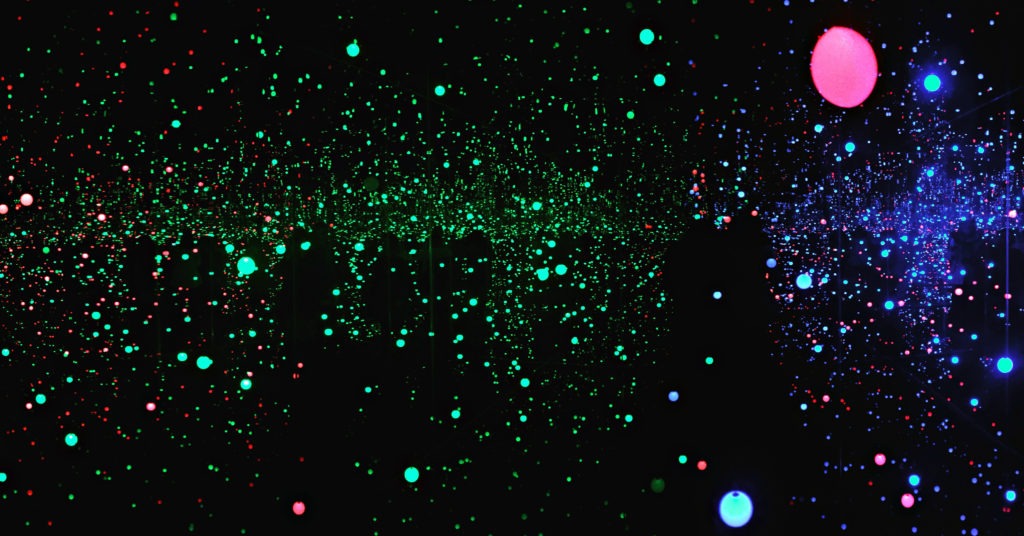

No Comments